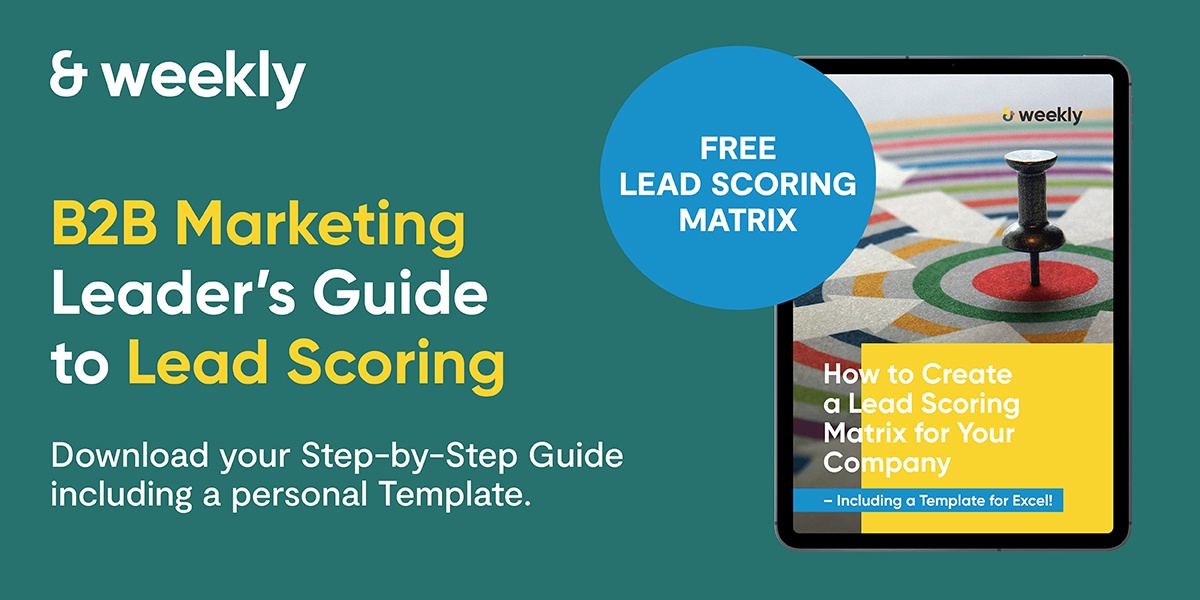Are you constantly on the hunt for positive customer reviews? With a sophisticated lead scoring model in your CRM, you can really turn the tables! Distribute scores to your customers and evaluate them based on relevant criteria to determine their likelihood of buying.
In this article, we’ll show you how your B2B company can benefit from lead scoring and how you can develop your own lead scoring model in just a few steps.
What Is a Lead Scoring Model?
Lead scoring is a marketing technique used by B2B companies to identify and prioritise potential customers, otherwise known as leads. Behind this lies a predominantly rule-based mechanism, i.e., the lead scoring model.
The lead scoring model in your CRM defines exactly which criteria are used to evaluate the quality of a lead. It’s very similar to a computer game. With demographic characteristics, behavioural patterns, and engagement, leads can earn points and advance to lower levels of the sales and marketing funnel. The further down they get, the more worthwhile it is for you to pay attention to them.
The lead scoring model lays a vital foundation in your digital marketing strategy. If you use it correctly, most of the otherwise laborious lead qualification process runs in an automated manner. Next, let's take a closer look at why a lead scoring model is so useful.
What Are the Benefits of Lead Scoring?
By using lead scoring models, you can scale your sales and marketing success and increase your conversation rates in a CRM like HubSpot. This is because you can see at a glance which customers are getting close to the happy end of the sales and marketing funnel – and which ones still need time or input. Here’s some of the tangible benefits of a lead scoring model:
- Increased efficiency: Your lead scoring model assigns a value to each lead. This value indicates how likely the lead is to become a customer. With this knowledge, you no longer prioritise according to your gut feeling, but according to sales potential. This helps to boost your marketing and sales efficiency.
- Improved conversion rates: With a lead scoring model, you target promising leads with high-quality content and personalised messages. This strengthens your conversion rate.
- Simplified lead nurturing: Using lead scoring models, you can not only identify mature leads, but also those who still need some love and attention before making a purchase. With marketing measures tailored to them, you can take them by the hand and guide them through the funnel.
- Lower costs: By focusing on high value leads, you’ll use your resources in a more targeted manner, ensuring your marketing spend also decreases.
Does lead scoring sound like music to your ears, but you don’t know where in CRM to begin? Right here! Get our handy template for your lead scoring model now.
What Are the Different Lead Scoring Models?
There are two types of lead scoring models: rule-based and predictive.
So far, we have described a rule-based model that assigns scores based on various rules. For example, a rule-based model can assign a higher score to leads that visit a certain landing page or come from a certain industry sector. This type of model is the most common, and an excellent choice for most growth-oriented B2B companies.
By contrast, predictive models use machine learning algorithms to analyse data. They find patterns in it that can predict which leads are most likely to convert. This type of model is quite complex to implement and is only worthwhile if you have a large number of leads.
Build Your Own Lead Scoring Matrix – With Our Template!
So, how do you apply a rule-based lead scoring model in practice? We recommend starting with our template and adapting it to your needs in three simple steps.
- Identify your target personas: Get to know your customers as comprehensively as possible as this will help you to categorise your leads.
- Define your scoring criteria: Which of your collected behavioural data do you want to integrate into the lead scoring model? In our template, we suggest positive and negative scores. Delete the criteria that you cannot or do not want to collect because they are not relevant for your company. Then simply add those things that are missing.
- Determine your lead score: Assign scores to your criteria. You can also use our template as a guide.
Need Help Jumpstarting Your Lead Scoring Model?
Lead scoring in a CRM like HubSpot is not rocket science, but it can sometimes be quite confusing. That’s why it makes sense to look at your lead scoring process with an external professional and improve it in a targeted manner.
Whether it’s brainstorming, clarifying questions or all round support – we want to be there for you. Here is your personal link to &weekly. Let’s get started together!






